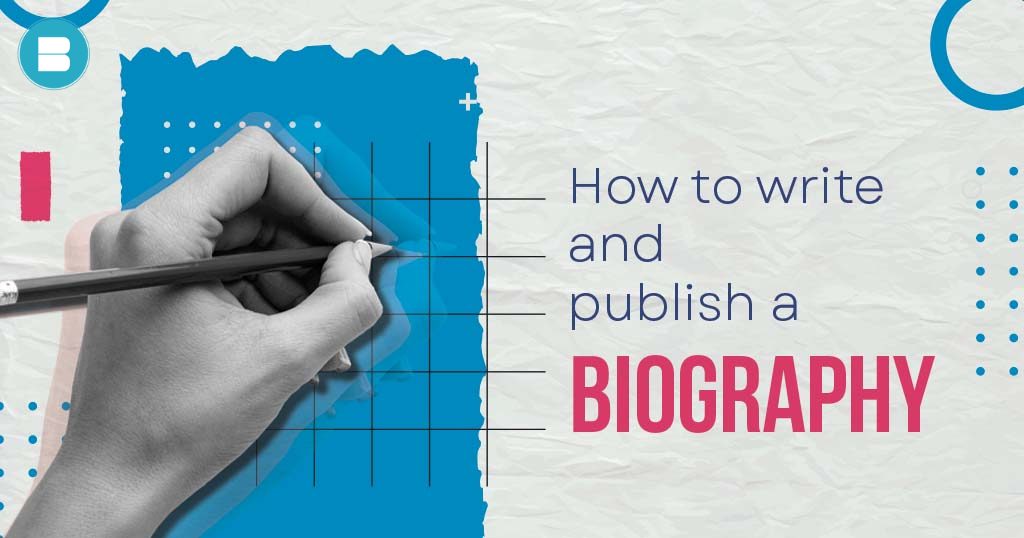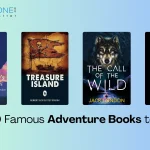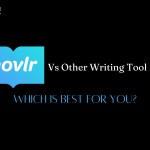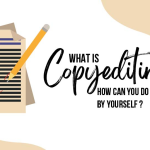Biographies are an intimate gateway into the lives of remarkable individuals, allowing us to glimpse their journeys, struggles, and triumphs. Whether you’re passionate about chronicling the lives of historical figures, celebrities, or even your own family members, writing and publishing a biography can be an incredibly fulfilling endeavour. In this comprehensive guide, we will take you through the process of crafting a compelling biography and navigating the intricacies of getting it published
You may also read: What is An Anti-Hero? Traits, Motivations & Famous Examples
How to write a Biography?
Understanding the Essence of Biography
A biography is more than a mere chronicle of events; it is an exploration of a person’s essence. It delves beyond dates and facts, seeking to understand the motivations, influences, and emotions that shaped the subject’s journey. A successful biography captures the person’s unique voice, experiences, and significance within a broader context.
Brainstorming: Laying the Foundation
Brainstorming is a crucial first step in the biography-writing process. It involves gathering ideas, themes, and angles that will guide your narrative. Here’s how to approach it:
- Select your subject: Choosing your subject is the foundation of your biography. Opt for someone whose life story resonates with you, whether they’re a historical luminary, a contemporary influencer, or even someone close to your heart. A captivating subject ensures that your enthusiasm will translate into a compelling narrative that engages readers.
- Research: Preliminary research is your roadmap to understanding your subject’s life journey. Delve into existing literature, articles, and documentaries to gain a grasp of their background, accomplishments, and pivotal moments. This initial exploration will guide you towards key events and themes that deserve further exploration in your biography.
- Identify Themes: Thematic exploration provides depth and structure to your biography. Reflect on the recurring patterns or motifs that define your subject’s life. Is their story marked by resilience in the face of adversity, innovation in their field, or a profound impact on society? Defining these themes will guide the narrative’s direction, adding cohesion and resonance.
- Gather Primary Sources: Primary sources are the treasure trove of your biography. Seek out personal letters, diaries, and interviews that provide direct insights into your subject’s thoughts, emotions, and experiences. These firsthand accounts offer authenticity and intimacy, enabling you to craft a vivid and authentic portrayal of their life journey.
You may also like: Amazon Ads for Authors: A Step-by-Step-Guide to Boosting Book Sales
You may also like: Left Behind Series Books in Order: Where to Begin
Crafting the Narrative for Biography:
- Structured Approach: Creating a structured outline lays the foundation for a coherent biography. Decide whether to adopt a chronological or thematic framework. A chronological order follows the subject’s life events in sequence, providing a clear timeline. A thematic approach groups events based on recurring themes or significant life stages, enabling a deeper exploration of the subject’s character and journey. This structure guides your writing, ensuring a logical flow that engages readers and highlights the most impactful moments of the subject’s life.
- Opening Impact: An attention-grabbing introduction sets the tone for your biography. Start with a hook that intrigues readers—a pivotal event, a thought-provoking quote, or an anecdote that encapsulates the subject’s essence. This initial impact draws readers in, sparking their curiosity and compelling them to delve deeper into the narrative. A compelling opening establishes an emotional connection and primes readers for the journey ahead, ensuring they are invested in discovering the subject’s story.
- Captivating Details: Vivid details breathe life into your biography, immersing readers in the subject’s world. Describe their surroundings, relationships, and experiences with sensory imagery. Transport readers to a specific time and place, allowing them to visualise and empathise with the subject’s journey. Sensory details—such as sights, sounds, smells, and textures—create a rich and immersive reading experience. These details not only evoke emotions but also establish a strong connection between readers and the subject’s experiences.
- Balanced Perspective: A balanced portrayal adds depth and authenticity to your biography. Present the subject’s achievements and successes alongside their challenges and vulnerabilities. Humanise them by showcasing their personal qualities, flaws, and growth over time. This multi-dimensional perspective resonates with readers, making the subject relatable and real. Highlighting both triumphs and struggles creates a genuine emotional connection, allowing readers to root for the subject’s successes while understanding the complexity of their journey.
Examples of biographical narratives:
- Historical Figure: Mahatma Gandhi: In “The Story of My Experiments with Truth,” Gandhi provides an intimate account of his life, revealing his transformation from a hesitant lawyer to a global advocate for nonviolent resistance. His narrative showcases personal growth, inner struggles, and dedication to social change.
- Contemporary Icon: Steve Jobs: In Walter Isaacson’s “Steve Jobs,” the biography delves into the complexities of Jobs’ character, exploring his visionary leadership, innovative mindset, and personal challenges. The narrative captures Jobs’ creative genius and his influence on technology and design.
- Personal Biography: Maya Angelou’s autobiographical series, starting with “I Know Why the Caged Bird Sings,” recounts her tumultuous life journey from childhood to adulthood. Her narrative confronts racism, trauma, and personal triumphs, resonating with readers through its candidness and resilience.
You may also like: The Importance of Professional Editing in Self-Publishing
How to publish a Biography?
Once you’ve meticulously crafted a captivating biography, the next step is to bring your work to the world through publication. Publishing a biography is a gratifying endeavour that allows you to share stories that resonate with readers and contribute to the literary landscape. In this guide, we will explore the steps and strategies involved in publishing a biography, accompanied by illustrative examples.
Choosing Your Publishing Path
Before you embark on the publishing journey, you must decide between traditional publishing and self-publishing. Each path has its own merits and considerations.
Traditional Publishing: This route involves submitting your manuscript to literary agents or publishing houses. If your manuscript is accepted, the publishing house handles editing, design, distribution, and marketing. While traditional publishing offers broader reach and industry expertise, securing a deal can be competitive and time-consuming.
Self-Publishing: Self-publishing empowers you to retain creative control and publish your biography independently. You can use platforms like Amazon Kindle Direct Publishing (KDP) or other self-publishing services. This option provides flexibility and faster publication, but it also demands that you take on responsibilities such as editing, design, and marketing.
Polishing your manuscript
Regardless of your chosen publishing path, your manuscript should be polished and refined. Proofread for grammar, spelling, and coherence. Consider enlisting a professional editor to provide objective feedback and suggestions for improvement.
Professional editing and design
For self-publishing, investing in professional editing and design is crucial. An eye-catching book cover and a well-formatted interior enhance the book’s visual appeal and ensure a seamless reading experience. Design elements must align with the tone and content of the biography.
You may also read: How to Publish a Book? | Publish Your Book | BlueRoseOne
Marketing and Promotion
Promoting your biography is essential for reaching your target audience and generating interest. Here are effective strategies to consider:
- Author Website: Crafting an author website provides a central hub for readers to learn about you and your biography. Showcase your background, writing journey, and other works. Dedicate sections to your biography, offering insights into the narrative, your motivations, and the journey of creating it. Include a contact page, allowing readers to reach out and fostering a direct connection that can deepen their engagement with your work.
- Social Media: Leveraging social media amplifies your biography’s visibility and engages a wider audience. Share captivating snippets from your biography, behind-the-scenes glimpses into your writing process, and personal anecdotes that resonate with readers. Consistent updates on platforms like Instagram, Twitter, Facebook, and LinkedIn create a dynamic online presence, fostering reader interaction and building a dedicated community around your work.
- Book Launch Events: Organising book launch events is a dynamic way to introduce your biography to the world. Host virtual gatherings or in-person meetups, inviting friends, family, local bookstores, and potential readers. Engage with your audience through readings, Q&A sessions, and personal anecdotes that offer insights into your writing journey. These events create excitement, generate buzz, and establish personal connections that enhance your biography’s visibility.
- Collaborate with Bloggers: Collaborating with book bloggers and influencers exposes your biography to a wider audience. Reach out to bloggers who align with your genre and target readership. Offer them copies of your biography for honest reviews and features. Positive reviews from trusted sources carry weight and can significantly influence potential readers’ decisions to explore your work. Partnering with bloggers extends your biography’s reach and enhances its credibility within the literary community.
You may also like: International Publishing: Expanding Your Reach Beyond Borders
Engaging with Readers
Engaging with readers not only promotes your biography but also establishes a deeper connection. Consider these engagement strategies:
- Book Clubs: Join or initiate book clubs that discuss your biography. Engaging in meaningful conversations about your work can lead to greater insights and reader loyalty.
- Reader Feedback: Encourage readers to provide feedback through social media, email, or author websites. Listening to your audience can inform your future writing endeavours.
Successful Examples of Published Biographies
- “Becoming” by Michelle Obama: Michelle Obama’s autobiographical masterpiece was traditionally published by Crown Publishing Group. The memoir offers readers a glimpse into her life as the first African-American First Lady of the United States, sharing her personal journey, values, and experiences.
- “Steve Jobs” by Walter Isaacson: Walter Isaacson’s biography of Steve Jobs was traditionally published by Simon & Schuster. The meticulously researched work captures Jobs’ entrepreneurial spirit, creative genius, and complex personality.
- Self-Published Success: “Educated” by Tara Westover: Tara Westover’s memoir “Educated” was self-published and later picked up by Random House. The powerful story of her journey from a survivalist family to earning a PhD resonated with readers, making it a New York Times bestseller.
Writing and publishing a biography is an art that allows you to immortalise lives, share inspiring stories, and contribute to the literary landscape. By selecting a compelling subject, conducting thorough research, crafting a captivating narrative, and exploring your publishing options, you can create a biography that resonates with readers and leaves a lasting impact. Remember, biographies have the power to illuminate history, celebrate accomplishments, and inspire generations to come.
You may also like: Challenges and Opportunities in Modern Book Distribution
















